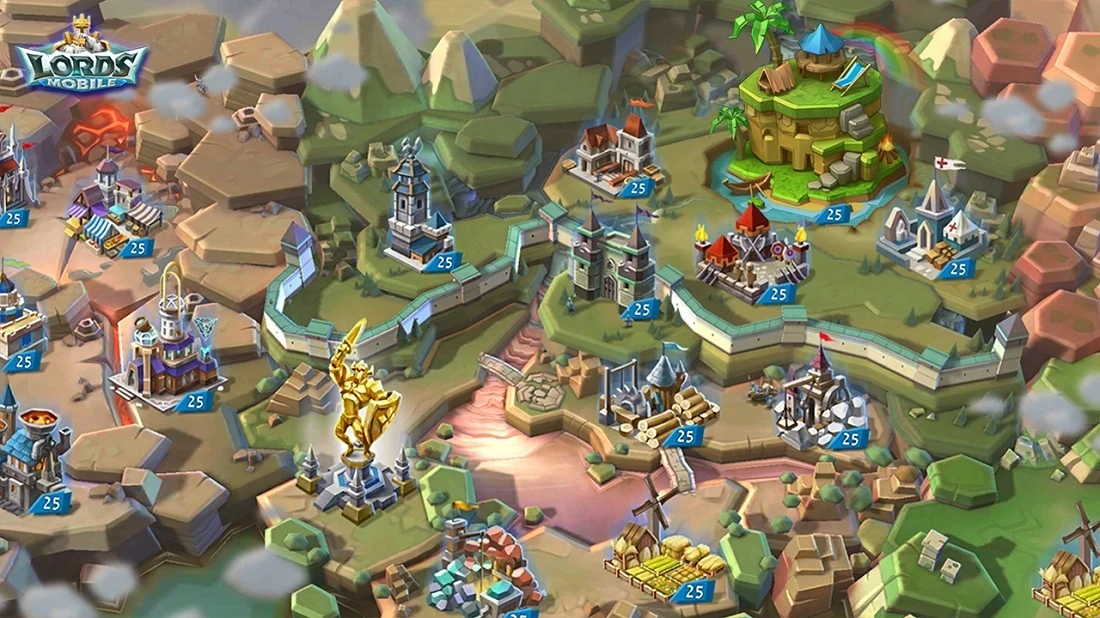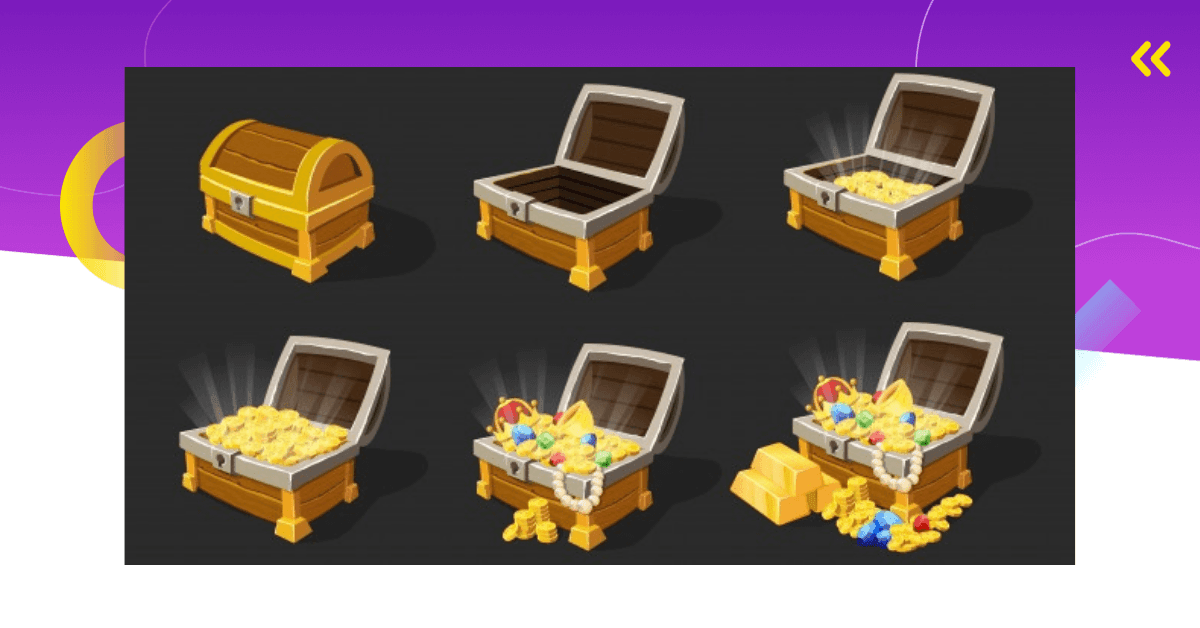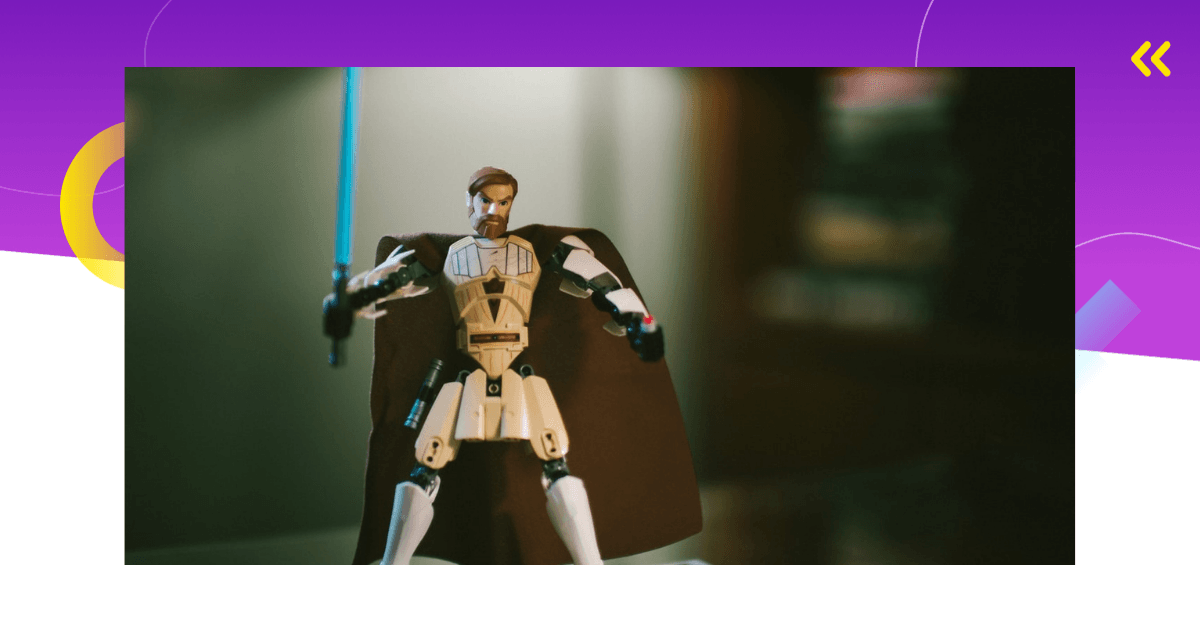PC and console gaming always had strong communities.
Mobile gaming, on the other hand – not so much.
However, over the last few years, this is changing. Social features have become one of the main mobile game market trends.
In this article, I’m analyzing different social features in mobile games. Find out which ones are the most popular, why, and how top games use them.
On Social Features in Mobile Games
Mobile gamers like to show off their progress, compete with friends, be constantly challenged, and feel like a part of a community.
Game developers know this, so they are adding more and more social features to their mobile games.
Even traditionally individual genres like puzzle match-3 embraced the social feature trend. For example, Candy Crush Saga now includes guilds.
If you predicted guilds in match-3 games five years ago, most people would call you insane.
According to Data.ai, today, roughly ⅔ of the top 50 games have no less than one social feature (App Annie). App Annie also reports that social features and PvP gameplay are some of the hottest gaming trends in 2023.
This has a lot to do with the pandemic and lockdowns.
While this was happening, people were craving social contact. As a result, they started hanging out in virtual places – including social mobile games. Even though the lockdowns are over, people never stopped playing social mobile games.
From what it looks like, they are not going to stop any time soon.

Social Features: The Effects
Social features can have multiple positive effects on mobile games. They have the power to make both players and developers happy.
Here’s how.
People like to compete, and social features can create a sense of competition.
I’m not talking about multiplayer games only. Simple social features like leaderboards, inviting friends to the game, and comparing results can have this effect too.
Another thing people like is feeling like a part of a group.
According to Getsocial, players are 2.7x more likely to keep playing a game because they feel like a part of a community. Usually, these in-game communities consist of players with similar interests and playing styles.
Moreover, social features in mobile games can motivate players to stay active. Especially if engaging with these features brings them rewards.
All of this should positively impact user retention, and consequently, the game’s revenues.
Finally, social features can also boost a game’s marketability.
Think about it – players inviting other players to join the game, sharing their accomplishments on social media, etc. All of these things can attract new players to the game.
The best part? These players come to your game at a ZERO cost.
Top 13 Social Features in Mobile Games
We can separate social features in mobile games into two main groups.
The first group includes social elements that are a part of gameplay. For example, guilds, co-op tasks, PvP gameplay, etc.
The second group includes social experiences that happen outside the core gameplay. These are features like chats and hangout rooms.
Let’s analyze these and other common in-game social features. Oh, and we’re bringing you examples of how the top mobile games use them!
1. In-Game Chat
When I think about in-game socializing, my mind goes straight to chats.
In-game chats are platforms that allow players to communicate in one place – your game. You can incorporate a text chat where players can communicate with text messages and emotes. Or you can make it more personal by adding a real-time voice chat feature.
Whatever you make it, in-game chats help players collaborate or simply connect and socialize with other players.
Here’s how different groups of players usually use the chat feature.
New players usually use it to make friends and ask simple questions. Experienced players use it to show off in front of others and even make real friendships. Hardcore players may use it to share strategies and coordinate with other players.
And sometimes all players want is to trash-talk other players…
Whatever it is, let them have it.
Having a chat feature can boost player engagement and help you create a strong in-game community.
Also, if your players have a place to communicate, there is a lesser chance they will switch to other messaging apps. This reduces the players’ need to leave your game.

In-Game Chat in PUBG Mobile
This popular first-person shooter has two types of chats: a voice chat and a quick text chat.
Players can use both of these to communicate with their teammates during battles.
The quick chat consists of generic messages like “Enemy”, “Help”, “Turn on voice chat”, etc. This way, players can communicate quickly without losing their focus on the game.
2. Social Media Connection
Today, when you launch almost any game, you get an option to connect your account with social media networks.
For example, continue with Facebook, Google, Apple, or – play as a guest.
By connecting to social media, players can track their friends’ progress, invite friends to the game, share in-game content, etc.
In a lot of cases, when players choose to connect with social media, they get some kind of reward. This is called incentivized social media connection.
If they decide to continue as guests, games usually don’t give up on them so easily. From time to time, players will be reminded they can connect to social media.
However, not all games introduce social media integration from the start. In some games, the option will appear after players engage with the game for a while. This is based on the good old “retain first, all other things later” logic.

Social Media Connection in Project Makeover
This match-3 game is not social by default, but it very much relies on social media integration.
For example, if players sign in to Project Makeover with Facebook, they will get 300 gems. This is the game’s premium currency, and players constantly crave it. Moreover, if they sign in with Facebook and run out of lives, they can ask their friends for more.
3. Send/Ask for Help
When players are stuck in a game, they don’t always need to make in-app purchases or watch ads.
Sometimes, they can ask other players for help.
There are different types of mutual help a game can offer. For example, players can send each other:
- In-game currency
- Energy/lives
- Army units
- Items or characters
Whatever it may be, help is always welcome. Players like to feel like a part of a helping, selfless community.
Moreover, if your game includes guilds, it would be good to have some kind of a trading system. This can be a great motivator for players to join them. Also, this way, players can show their loyalty to the guild.
Finally, you can even make sending help a part of your monetization strategy. You can allow players to make purchases for their friends and make them really, really happy.

Send/Ask for Help Feature in Pokémon Go
Pokémon Go introduced this social feature in 2018, two years after its initial release.
In the game, players can trade Pokémons and gift players from their “friends list”.
The game has a special gifting system. As they play, players pick up “Gifts”. They can’t open them themselves, they can only send them to others. This way, the game encourages them to become more social.
As they do this, they develop friendships with other players. More precisely, they climb through four stages of friendships – from “good” to “best” friends.
4. Leaderboards
If your game has any competitive elements, it’s a good idea to include leaderboards.
Leaderboards are ranking systems that rank players based on their in-game achievements. There are different types of leaderboards you can include in your game. For example:
- global leaderboard
- country leaderboard
- event leaderboard
- guild leaderboard
- player vs. friends leaderboard
Whether it’s against friends or someone else, competition is in human nature. If your players compete, they will spend more time (and maybe money) to climb the ladder.
In case your game is all about self-improvement and competition, use this feature right.
For example, it is a good idea to show players leaderboards each time they finish a stage. This way, they are constantly challenged to keep playing until they get better.

Leaderboard Feature in June’s Journey
This hidden object game is mainly about solving mysteries. Nevertheless, it also delivers to a competitive group of players.
Upon completing hidden object scenes, players can see a PvP leaderboard. In it, they can see how fast they solved it in comparison to other players. However, this doesn’t affect their progress in any way. Yet, I’m sure this feature keeps a lot of players playing June’s Journey.
5. Guilds
This social feature first appeared in multiplayer mid-core games. However, in the last couple of years, guilds are becoming a common feature in the casual category as well.
According to GameRefinery, 61% of the top-grossing 100 games on iOS include guilds. This has increased by 20% in the last two years.
Here’s how they work.
Guilds are in-game communities that gather like-minded players together. These players are usually united by similar interests, engagement levels, and playing styles.
When a game features guilds, it encourages players to join them. Usually, it offers in-game currency as a welcome gift.
In these communities, players can exchange resources, compete as groups, collaborate, work on common goals, etc. They really need to be there for their guildmates.
For example, I was once thrown out of a guild because I wasn’t playing the game actively enough.
That’s just how it goes with guilds.

Guild Feature in Lords Mobile
In this strategy game, players can team up with others by creating or joining a guild. This comes with a welcome reward – 400 gems, which is very generous.
Guild allies should help each other with building and researching. They can also participate in different guild events and send each other help on a daily basis.
Being a part of a guild also includes chatting with guildmates. In fact, the game encourages players to keep the chat alive. For example, sending emotes to the guild chat can bring them rewards.
6. Co-Op Modes
Playing alone can get lonely and, well, boring.
On the other hand, playing with others can keep players entertained and engaged for longer.
Therefore, if you can include some kind of cooperative teamplay into your game, do it.
Co-op modes can come in two different versions – competitive and non-competitive.
Competitive co-ops are any tasks and battles you go in together with friends or random players against another team of players. For example, real-time matches, guild wars, or other competitive guild efforts.
On the other hand, non-competitive co-ops include different missions players complete as a part of a team. For example, quests, tasks, or milestones. This applies to any type of team – with friends, random players, or guildmates.

Co-Op Mode in Clash of Clans
This game’s famous “Clan Wars” are considered a competitive co-op.
During this two-day event, clans compete against each other, and the clan that earns more stars wins.
What motivates players to participate in the event? If they complete successful attacks, they will receive rewards that can make their base more powerful.
7. PvP Modes
Player vs. player battles are one of the most exciting types of social interaction.
Depending on the game type, PvP matches can be synchronous or asynchronous.
In other words, they can happen in real-time or take turns.
In synchronous PvP matches, players compete against each other in real-time.
In asynchronous PvP matches, players also face other players. The only difference is, this doesn’t happen in real-time.
How do games determine rivals?
This depends on the matchmaking mode you set. For example, the game can randomly choose their opponents, players can choose whoever they want, or they can choose from a list you give them.
However it works, a competitive mode like this can have great effects on your game’s engagement rates.

PvP Modes in Clash Royale
Clash Royale is all about winning in exciting player vs. player clashes.
These clashes mainly take place in arenas, where players are battling in real-time. Therefore, the game’s PvP mode is synchronous. In this mode, the game determines the players’ opponents.
Additionally, players can choose from three other PvP modes. This includes friendly matches, matches with an entry fee, and custom-arranged tournaments.
8. Social Currency
If social features are extremely important for your game, you can go and create a special, social currency.
Social currency can be acquired through some kind of social activity (e.g. participating in social events, helping guild members, playing the PvP mode).
How does this affect the players and the game?
This feature aims at players who are already very engaged with the game. If they want to earn this currency, they will need to interact with other players more.
If this works, you should see better engagement and retention rates.

Social Currency in Summoners Wars
In this RPG game, players can obtain social currency with a pretty straightforward name – Social Points.
There are a couple of ways players can earn the currency. They can get it as a gift from friends, for borrowing their monsters to friends, and for inviting friends. Players need the currency to summon monsters, so they can’t ignore it.
This motivates players to add others as friends and engage with active players. It also encourages ditching inactive players. Sorry, everyone!
9. Spectator Mode
Watching others play can be very exciting for hardcore gamers.
If this weren’t true, Twitch wouldn’t be such a big deal.
The spectator mode delivers on this in mobile games. It allows players to watch others play the game from a 3rd person or 1st person perspective.
Wondering why players do this?
Sometimes, they are sick and tired of constantly losing and want to see how the players who beat them play. On the other hand, some players use this feature as a streaming platform and watch it for fun.
Or they are waiting for their friends to finish games, so they might as well watch them.
The reasons are many, but one thing is for sure – this is quite a cool feature for keeping players in your game for longer.

Spectator Mode in Call of Duty: Mobile
In this first-person shooter, players can access Spectator mode.
However, the feature is not available in all modes. Players can only spectate Multiplayer Core, Battle Royale, Ranked Multiplayer, and Custom rooms. Also, they can’t spectate just anyone. They can only watch players they have on their “friends” list.
However, if players don’t want to be spectated for any reason, they can disable the mode.
10. Push Notifications
In mobile games where being social is a big deal, players can get social push notifications.
For example, they can get notified when someone is speaking to them in the chat, when it’s their move to play, when someone is asking them for help, etc.
Whatever their content is, social push notifications can be a great re-engagement tool. For example, if players have been away for a while, and they see their friends still playing, they might wish to come back to the game.
However, you should be careful with this feature.�
Even though social interactions are unlimited, not every one of them should come as a push notification.

Social Push Notifications in AFK Arena
Among other push notifications in AFK Arena, the game also sends out guild chat notifications.
In this RPG game, guilds are a pretty big deal. If players want to get rewards from daily missions and guild wars – they need to be a part of a guild.
Naturally, hardcore players will find these notifications most relevant. On the other hand, less engaged players may find them annoying.
11. See Other Players’ Progression and Activity
Just like on social media, players like to see what others are up to.
For example, if they are competitive, they may want to see how others are progressing. Others just want to get some inspiration from others.
You can deliver on this curiosity.
Depending on your game, you can allow players to visit each other’s bases, see their progression on a map, see their stats, etc.
Another popular social feature you can utilize are in-game activity feeds. In these feeds, players can see social media-like updates. For example, they can:
- follow their fellow players’ progress
- see if they are currently active
- ask for help/currency/lives
- share their thoughts, ideas, and questions

Friends’ Progression in Candy Crush Saga
Candy Crush has always been a social-media and friend-focused game.
If players are connected to Facebook, they can see their friends’ in-game progress. This feature is called “Candy Connections”.
They don’t even have to see all of their Facebook friends. Players can simply pick out friends whose progress they are interested in.
The friends that the players select then show up on their world map and rankings. Also, these are the same friends they can ask for lives or send them.
12. Hangout Rooms
Sometimes, players want to rest from competing and just want to socialize.
For this reason, some games offer a place in the game where players can do exactly this.
Hangout rooms allow players to interact, show off their awesome cosmetics, chat with others or maybe play some mini-games.
It’s the equivalent of getting together for coffee.
According to GameRefinery, this social feature is especially popular in China. Therefore, if you’re aiming for the world’s biggest mobile game market, consider it.

Hang-Around Room in Knives Out
This game is all about battling other players and surviving.
However, this is not everything the game offers.
The game also has a separate mode called “Paradise Island”. This is a place where players can put their knives away. They can set up and decorate a villa and invite other players to just chill and socialize.
13. Shareable Achievements and Replays
Let’s be honest – we’re all kind of vain. If we have something amazing to show off, we probably will.
For this reason, a lot of mobile games offer the option to share achievements or match-replays.
When players achieve something great in a game, for example, beat stronger opponents, they might want to share it.
This feature not only helps players brag, but it can also help you attract new, similar types of players.
The best part? Since it’s user-generated content, these players would come to your game without you spending a buck.

Sharable Achievements in Wild Rift
MOBA players are famous for their competitive spirits.
Therefore, it’s no wonder that such games include features that let players show off.
In League of Legends: Wild Rift, players can share their achievements from a personal or team perspective. These achievements then turn into banners made for social sharing.
Another feature the game has are game replays. However, they are not directly shareable, so players would need to go around to share their awesome moves.
Tips for Encouraging Social Interactions
So far, we’ve learned that social features in mobile games are very beneficial. You now also know what the best ones are.
The final question is, how to encourage social interactions between players and entice more users to use these features actively?
There are a couple of different ways you can go about it.
The easiest way is to offer some type of reward for interacting with the game’s social features. For example, you can offer extra coins or game items to players who share their progress, connect their social media accounts, or compete in a tournament.
Furthermore, you need to make sure that you clearly explain these features to players – it’s best to do it while onboarding new players. Additionally, social features need to be well-integrated with the core gameplay.
Social Features in Mobile Games: That’s it?
This is it, these are the most important social features in mobile games you should know about.
As you can see, if done right, social features bring many benefits for both the developers and players.
Now, we want to hear from you. Do you believe that social features are the future of mobile gaming? What features are you using in your game? Would you add some other features to the list?
Let me know in the comments below!







Comments